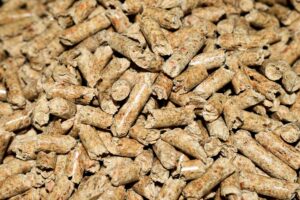
Ukraine is increasing exports of sunflower oil to India. In July 2025, it supplied 78,000 tons to this country, which is 57% more than in June, according to the analytical agency UkrAgroConsult.
The agency cited Indian sources, according to which Ukrainian oil accounted for 39% of total imports of this product to India in July, which amounted to 200,000 tons. Thus, for the first time since the start of the war,
Ukraine has overtaken Russia, whose exports to India in this segment amounted to 49,000 tons, or 25% of the total volume imported into the country.
“In recent seasons, Russia has dominated the Indian sunflower oil market, while Ukraine’s share has fluctuated between 13% and 34%. However, in the second half of the 2024/25 season, Russian producers reduced production volumes due to low profitability, which led to a decrease in supply on foreign markets. An additional factor was the non-zero export duty on Russian oil,” experts explained.
According to analysts, Ukraine exported 767,000 tons of sunflower oil to India between September 2024 and July 2025, which is 55% more than in the same period of the previous season.
“This figure is a record since 2022, confirming India’s position as a key importer of Ukrainian oil. The growth in exports reflects the stable recovery of Ukraine’s position in the global market,” UkrAgroConsult concluded.

In 2024, Ukraine entered the TOP 3 global leaders in honey exports and ranked third with 85.8 thousand tons, according to the Ukrainian Agribusiness Club (UABC).
Analysts noted that China and India ranked first and second among the world’s top five honey exporters last year, with 169,600 tons and 94,800 tons, respectively. Argentina (78,100 tons) and Vietnam (48,200 tons) ranked fourth and fifth.
“Honey is probably one of the few components of Ukrainian agricultural exports that has not been affected by the blockade of seaports by Russian troops, as its main consumers are European countries. Previously, the duty-free quotas for this product, which were allocated under the Association Agreement with the EU, were exhausted by Ukrainian exporters in a matter of days — sometimes as early as January 4. After the European Union abolished duties and fees on Ukrainian exports, Ukrainian beekeepers had profitable export opportunities,” the experts explained.
According to their information, the largest buyers of Ukrainian honey in 2024 were Germany (18.9 thousand tons), the United States (12.1 thousand tons), Poland (9.7 thousand tons), France (9.6 thousand tons), and Belgium (7.1 thousand tons). In addition, Ukrainian honey was present in other markets, namely Turkey, Great Britain, Japan, Switzerland, Canada, Qatar, Jordan, etc.
However, in 2025, the EU reintroduced quotas on Ukrainian honey, creating additional barriers to exports.
“Although the quotas are significantly higher than before, they still do not cover Ukraine’s entire export potential. At the same time, this is an important step that helps Ukrainian producers remain competitive in the European market, which remains key for the sale of Ukrainian honey,” the UCA concluded.

Imports of tin and tin products rose by 52.2% to $2.338 million (in July – $410,000), while exports of tin and tin products in the first seven months of 2025 amounted to $101,000 (July – $16,000) compared to $331,000 in the first seven months of 2024.
Tin is mainly used as a safe, non-toxic, corrosion-resistant coating in its pure form or in alloys with other metals. The main industrial applications of tin are in white tin (tin-plated iron) for the manufacture of food containers, in solders for electronics, in domestic piping, in bearing alloys, and in coatings made of tin and its alloys. The most important alloy of tin is bronze (with copper).

The Export Credit Agency (ECA) supported UAH 1.49 billion of exports in July 2025, insuring eight loans totaling UAH 359.14 million issued by Ukrainian banks to entrepreneurs for the fulfillment of export contracts.
According to the ECA website, the agency’s largest partners among banks during this period were Ukrgasbank (UAH 1.09 billion in supported exports and loans worth UAH 49.62 million), Bank Alliance financed exports worth UAH 153.13 million with loan agreements totaling UAH 239.51 million, and Creditwest Bank financed exports worth UAH 146.93 million and provided loans worth UAH 70 million.
In July, the ECA’s services were most used by exporters from Ternopil (UAH 1.03 billion in supported exports), Cherkasy (UAH 156.69 million), Mykolaiv (UAH 153.13 million), and Odesa (UAH 88.25 million) regions. In Kyiv, support amounted to UAH 41.87 million, and agreements were also signed in the Rivne, Dnipropetrovsk, and Chernihiv regions.
The largest contracts for the period were concluded for the supply of Ukrainian goods to Austria (UAH 1.03 billion), Lithuania (UAH 235.18 million), as well as to Israel, Jordan, the United States, Italy, the Netherlands, Germany, Poland, Moldova, and Georgia. The most popular export commodity groups were the production of oils and animal fats (UAH 1.03 billion), processing and preservation of fruits and vegetables (UAH 153.13 million), wholesale trade in seeds and animal feed (UAH 146.93 million), production of chains and springs (UAH 88.25 million), and pharmaceuticals and materials (UAH 41.87 million).
The Export Credit Agency of Ukraine (ECA) is a state institution that supports non-raw material exports by insuring the risks of enterprises and banks. The agency insures foreign economic contracts, export credits, bank guarantees, and investment credits against military risks.

Agroholding KSG Agro has completed the harvest of spring barley and wheat from an area of 7,604 thousand hectares, of which 6,428 thousand hectares were allocated for wheat and 1,176 thousand hectares for spring barley, the press service of the agroholding reported.
“This year’s summer harvest in our Dnipro region was difficult. Weather conditions, including the effects of last year’s drought, took their toll. (…) We plan to use the harvested grain as ingredients for mixed feed for our pig farm. Part of it will be sold under export contracts,” said Sergey Kasyanov, Chairman of the Board of Directors of KSG Agro.
The agricultural holding specified that during the summer harvest, 18 John Deere and Claas Lexion combine harvesters and 60 trucks were used on KSG Agro’s fields.
KSG Agro is a vertically integrated holding company engaged in pig farming, as well as the production, storage, processing, and sale of grain and oilseeds. Its land bank in the Dnipropetrovsk and Kherson regions is about 21,000 hectares.
According to KSG Agro, it is one of the top five pork producers in Ukraine.
In 2023, the agricultural holding began implementing a network-centric strategy, under which it will move from developing a large location to a number of smaller pig farms located in different regions of Ukraine.

Novokramatorsk Machine-Building Plant (NKMZ, Kramatorsk, Donetsk region) plans to increase production and sales by 81.5% in 2025 compared to 2024, to UAH 2.08 billion.
The relevant plans are contained in the company’s financial report for 2024, published in the NSSMC disclosure system.
“The company’s activities in 2025 will, with a high degree of probability, be limited. Based on these assumptions for 2025, production plans have been approved for 12,700 tons of machinery and equipment for the metallurgical, mining, construction, lifting, loading, and unloading industries, as well as spare parts,” the report says.
NKMZ notes that this year, the plant’s metallurgical production plans include the manufacture of 21.78 thousand tons of liquid steel, 120 tons of liquid pig iron, 1.1 thousand tons of steel castings, and 100 tons of pig iron, as well as 15.84 thousand tons of forgings.
“The development of projects for the promising further development of the enterprise, the formation of measures aimed at the successful operation of the enterprise, the creation of new equipment and research and development, the technical re-equipment and introduction of resource-saving technologies will begin after the end of the war in Ukraine,” the plant said.
At the same time, measures are planned for 2025 to conduct a supervisory audit of the quality management system by ISOaccelerator to confirm and extend the validity of the ISO 9001:2015 certificate.
The marketing strategy of PJSC NKMZ for the current year is to maintain and expand strategic market segments and increase its presence in Eastern, Central, and Western Europe, and Central Asia.
According to the report, in 2024, the main market segments for NKMZ PJSC products were Asia (54.4% of sales), Europe (24.9%), and Ukraine (17.9%).
In terms of total sales in monetary terms, 55.2% were rolling rolls, 18.1% were metallurgical and rolling equipment, 7.3% were mining and ore equipment, and other equipment accounted for 19.4%.
Investments in production development last year amounted to UAH 28.15 million.
As reported, in 2024, NKMZ’s net income increased 3.2 times compared to the previous year, reaching UAH 1 billion 146 million, with exports to European and Asian countries accounting for UAH 941.3 million (82%). Net profit amounted to UAH 36.33 million (in 2023, the company reported a loss of UAH 856.93 million).
At the same time, in 2024, Slovakia, Lithuania, Egypt, and Luxembourg joined Uzbekistan, Kazakhstan (where exports fell 12.3 times over the year), and India (where exports grew 31 times) as the largest importers of NKMZ products. Supplies within Ukraine increased 5.2 times to UAH 204.6 million.
NKMZ, whose capacity was forced to be mothballed with the start of the full-scale military invasion of Ukraine by the Russian Federation, began to partially resume operations in October 2023.
NKMZ is a city-forming enterprise in Kramatorsk, the largest in Ukraine in the production of rolling, metallurgical, forging and pressing, hydraulic, mining, lifting and transport, hydraulic and railway equipment.
Before the war in 2021, the company’s net income exceeded UAH 6 billion.
At the beginning of 2023, the average number of employees exceeded 7,200, and at the beginning of 2025, it was 5,660.
ASIA, EUROPE, EXPORT, NKMZ, PRODUCTION